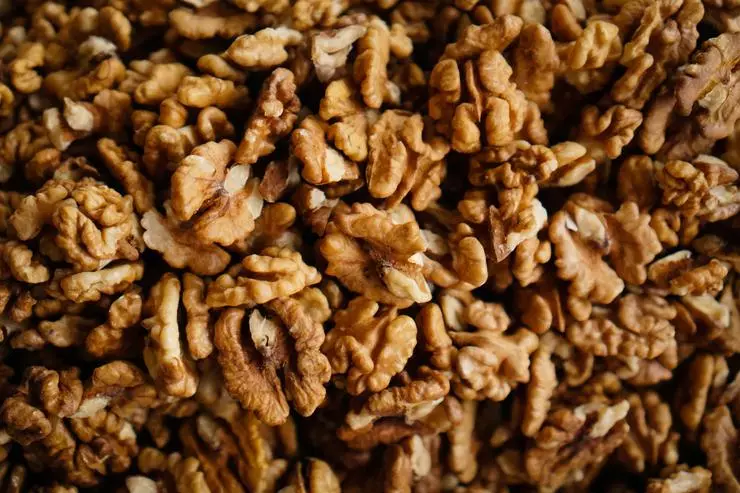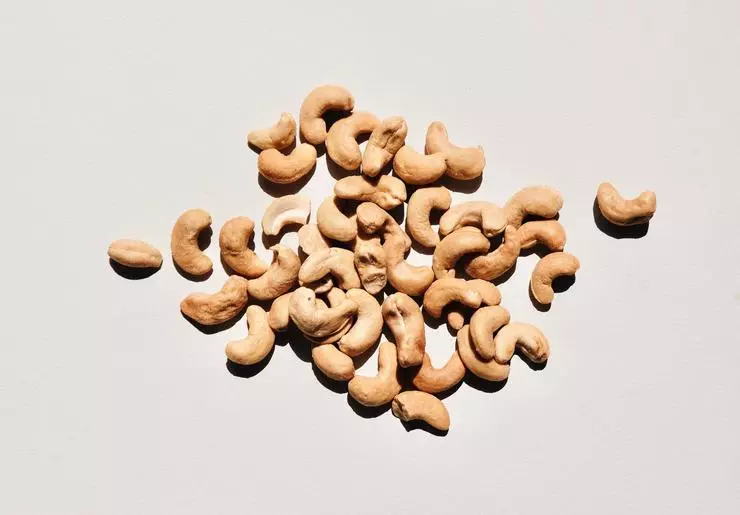Nuts are a delicious, rich in a snack or supplement to food. They are universal, they are easy to eat on the road, and they are a good source of plant squirrel, especially for those who eat little or do not eat animal products at all. Nuts can help you meet your needs in protein, which is necessary for building bones, muscles and leather. The protein also increases the feeling of satiety, helping you remain satisfied and charged energy. Although all nuts contain protein, some of them contain more than others. This article discusses 8 nuts with a high content of protein.
Almond
Protein: 7 grams for a portion of 1/4 cup (35 grams) almonds.
In fact, almonds are seed. However, people often group them with nuts and believe that they contain a lot of protein. Almonds are not only rich in protein, but also rich in antioxidants. These vegetable compounds protect the organism from oxidative stress caused by free radicals, which can lead to aging, heart disease and some types of cancer. The brown layer of the skin around the almond contains the highest concentration of antioxidants, so it is best to obtain the maximum benefit that there is almonds with skin. To make a balanced snack from almond, combine them with fruit.
Walnuts
Protein: 4.5 grams for a portion of 1/4 cups (29 grams) crushed walnuts
The use of walnuts is an excellent way to increase protein intake. Walnuts are also a source of healthy fat. In particular, they contain more omega-3 fatty acids in the form of alpha-linolenic acid (Alc) than any other nuts. Some observational studies associate Ala consumption with a lower risk of heart disease. Possessing a fat texture and taste, walnuts are a good additive to the minced meat and can further increase the protein content in meat dishes.

Walnuts are also a source of healthy fat
Photo: unsplash.com.
Pistachii
Protein: 6 grams for a portion of pistachios from 1/4 cup (30 grams)
The portion of pistachios provides as much protein as one egg. These nuts have a higher ratio of essential amino acids compared to the protein content compared to most other nuts. An indispensable amino acids are the amino acids that need to be obtained with food so that the body can use them to create proteins needed for important functions. If you like there are pistachios, try mixing them with nut butter and eat with toasts, apples or crackers.
Cashew
Protein: 5 grams per 1/4 cup (32 grams) cashew.
Cashew is technically seeds. They are not only rich in protein, but also contain several important vitamins and minerals. Portion in 1/4 cup (32 grams) provides about 80% of the daily copper norm. Copper is a mineral that supports immunity and contributes to the formation of red blood cells and connective tissue. Studies also found a link between low copper consumption and an increased risk of osteoporosis, a state characterized by weakness and brittleness of bones. Thus, an increase in the amount of copper in your diet with a cashew can be one of the protection methods from this state. To add more cashew to your diet, eat them as part of a balanced snack over a simple yogurt with fruit.

To add more cashew to your diet, eat them as part of a balanced snack over a simple fruit yogurt
Photo: unsplash.com.
Pine nuts
Protein: 4.5 grams per 1/4 cup (34 grams) of cedar nuts.
Cedar nuts are seeds of some varieties of cedar cones. They are valued for a soft sweet taste and an oily texture caused by high fat content. In addition to 4 grams of protein, the portion of cedar nuts per 1/4 cup (34 grams) contains 23 grams of fat. Fat in cedar nuts mainly comes from unsaturated fats, which can help reduce the risk factors for heart disease. One of the fatty acids in cedar nuts can also have an anti-inflammatory effect and help prevent the spread of cancer. Roasted cedar nuts are a great way to add a little protein into salads, grain or vegetables. To fry the cedar nuts at home, prepare them in a frying pan on medium heat a few minutes before the appearance of the flavor.
Brazilian nuts
Protein: 4.75 grams per portion of 1/4 cups (33 grams).
Brazilian nuts are obtained from the seeds of a tropical tree, and they are easy to detect in a package with mixed nuts, as they are usually the largest. Along with the protein, they contain useful fats, fiber and a set of trace elements. Moreover, Brazilian nuts are one of the best food sources of selenium, an important mineral supporting the health of the thyroid gland and protecting the body from infections. Only one Brazilian walnut (5 grams) has almost 175% of the daily settlement of Selena. Try to mix Brazilian nuts with other nuts and seeds, dried mangoes and pieces of dark chocolate to get a mixture rich in protein.
Peanut
Protein: 9.5 grams per portion of 1/4 cups (37 grams).
Peanut is a bean, but is considered a nut from the point of view of nutrition and cooking. Like most legumes, they contain a lot of protein of plant origin. In fact, in peanuts the highest protein content of all commonly used nuts. Peanuts is also one of the best food sources of biotin, vitamin, which helps to convert food into useful energy in the body. To get a balanced snack containing protein, fats and carbohydrates, combine peanut butter and bananas separately or put them to toasts.
Hazelnut
Protein: 5 grams for a portion of 1/4 cup (34 grams).
The hazelnut has a slightly sweet, oily and fried taste, which makes them a particularly tasty source of protein. Studies also showed that the addition of hazelnut in your diet can help reduce LDL cholesterol levels (poor) and increase HDL cholesterol (good), thereby reducing the risk of heart disease. As a squeack with a high protein content, prepare home paste "Nutella". Mix 1 cup (135 grams) of forest nuts with 2 spoons (60 grams) of chocolate protein powder, 1 tablespoon (6 grams) cocoa powder and two tablespoons (30 ml) of maple syrup.
